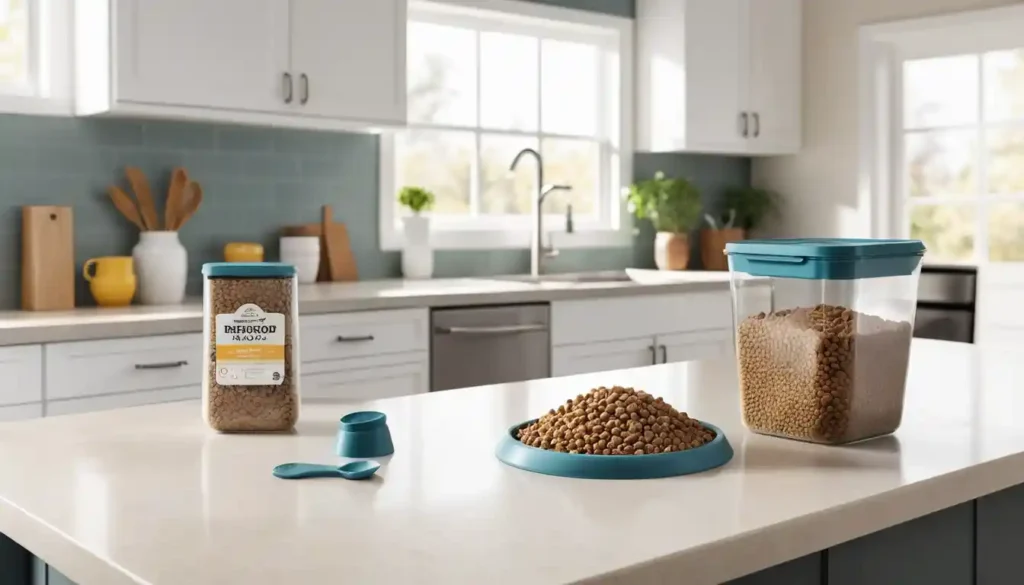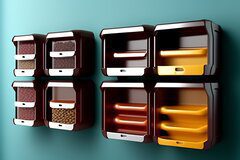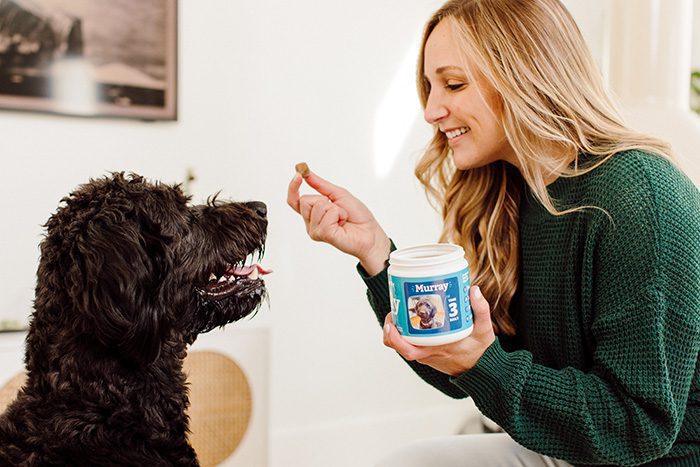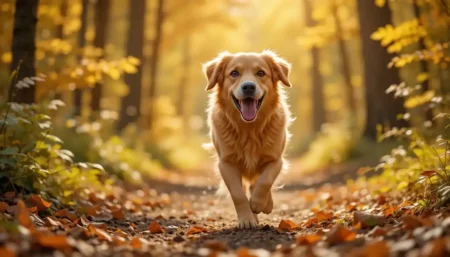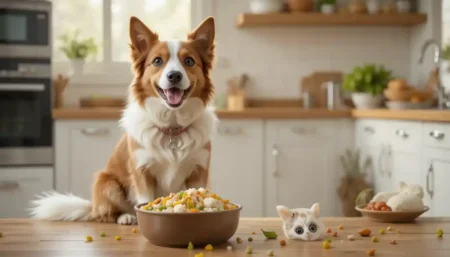Dog food containers preserve freshness, prevent spoilage, and keep pests out. Choosing the right one protects your dog’s nutrition and health. This guide covers benefits, types, and key selection factors for optimal pet food storage.
Why Your Dog’s Food Deserves Better Than the Bag
Ever open a bag of kibble only to find it stale, clumpy, or smelling “off”? You’re not alone. Most pet parents overlook a critical step after buying dog food: proper storage.
While bags seem convenient, they expose food to air, moisture, and pests—sabotaging nutrition and safety. Quality dog food containers solve this by locking in freshness, extending shelf life, and shielding your pet from health risks.
In this guide, you’ll discover how the right container transforms your dog’s meals, saves money, and gives you peace of mind. Let’s dive into why this simple swap matters more than you think.
Why Dog Food Containers Matter More Than You Think
Dog food containers aren’t just tidy storage—they’re essential guardians of your pet’s health. Exposure to oxygen, humidity, and light degrades vitamins (like A and E) and fats in kibble within days.
This leads to rancidity, nutrient loss, and even mold growth. The right container blocks these threats, ensuring every bowl delivers peak nutrition.
Beyond health, they prevent costly waste and keep your kitchen pest-free. Let’s break down the concrete advantages.
Top 5 Benefits of Using Dedicated Dog Food Containers
- Preserves Nutritional Integrity:
Airtight seals block oxygen and moisture, slowing oxidation that destroys vitamins and healthy fats. Studies show kibble stored in containers retains 30% more nutrients after 30 days versus open bags. - Prevents Spoilage & Rancidity:
Oxygen exposure turns fats rancid within 2 weeks in open bags. Containers with oxygen absorbers or vacuum seals extend freshness to 6–8 weeks, eliminating “off” smells and tastes. - Blocks Pests & Contaminants:
Rodents, ants, and pantry moths can chew through flimsy bags. Hard-sided containers with locking lids create an impenetrable barrier, keeping food clean and safe. - Reduces Waste & Saves Money:
Stale or bug-infested food gets tossed. Proper containers cut waste by up to 25%, saving $50–$100 annually for average dog owners. - Keeps Kitchens Organized & Odor-Free:
Spills and lingering “kibble smell” vanish. Stackable, sleek containers tidy pantries while carbon filters in some models neutralize odors.
Vet Insight: “I see more dogs with itchy skin or digestive issues from rancid fats in poorly stored food than owners realize. A good container is preventative medicine.” – Dr. Lena Torres, DVM, Pet Nutrition Specialist.
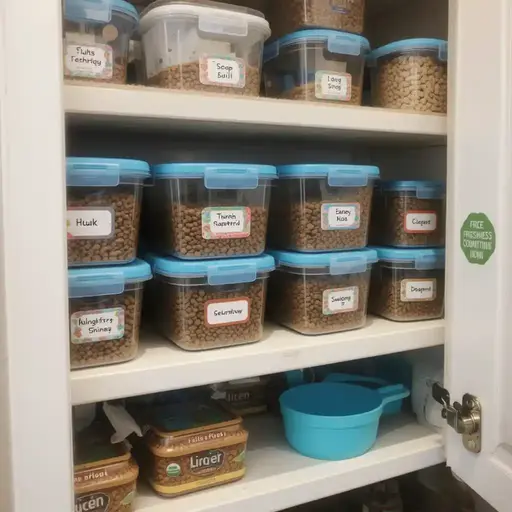
Types of Dog Food Containers
Not all containers are created equal. Material, seal type, and capacity drastically impact performance.
Choosing wrong risks moisture buildup, breakage, or ineffective pest control.
Below, we compare the top options based on durability, safety, and real-world effectiveness—so you invest wisely.
Material Showdown: Plastic, Stainless Steel, or Glass?
| Material | Best For | Key Pros | Key Cons | Top Pick Example |
|---|---|---|---|---|
| BPA-Free Plastic | Budget-conscious owners; Large breeds | Lightweight, affordable, shatterproof, stackable | Can absorb odors/stains over time; Scratches harbor bacteria | Rubbermaid Brilliance |
| Stainless Steel | Safety-focused homes; Hot climates | Non-porous, zero odor retention, pest-proof, eco-friendly | Heavy, expensive, no visibility of food level | Vtopmart Airtight Canister |
| Glass | Small-dog households; Freezer storage | 100% non-toxic, no odor retention, microwave-safe | Heavy, fragile, poor for large quantities | OXO Pop Container |
Critical Note: Avoid containers with recycled plastics unless certified food-safe. Some leach chemicals when in contact with fatty kibble.
Seal Technology: What Actually Keeps Air Out
A container is only as good as its seal. Don’t assume “snap lids” equal airtight:
- Gasket Seals (Rubber/Silicone Rings):
The gold standard. Creates a vacuum-like barrier when pressed shut. Look for: Continuous, non-removable gaskets (e.g., Gamma2 Vacs). - Clamp Locks (Lever-Lid Systems):
Pressure-sealed lids (like OXO Pop). Effective, but gaskets may wear out in 1–2 years. - Basic Snap Lids:
Often leaks air within days. Only suitable for very short-term use (e.g., travel).
Pro Tip: Test airtightness by filling the container with rice, sealing it, and submerging it in water. Bubbles = air leaks.
Capacity & Design: Matching Your Dog’s Needs
- Small Dogs (Under 20 lbs): 5–10 lb capacity. Glass or small steel containers work well.
- Medium/Large Dogs (20–80+ lbs): 25–35 lb capacity. Prioritize wide mouths for easy scooping and stainless steel/plastic durability.
- Multi-Dog Households: Get two containers—one for current use, one pre-filled for rotation. Prevents constant opening/closing.
Avoid containers narrower than 8 inches wide. Scooping from deep, narrow bins crushes kibble and wastes food.
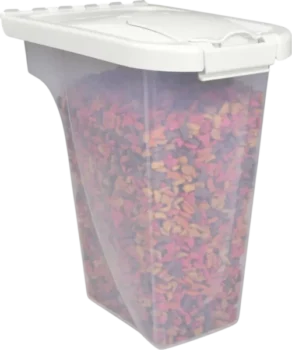
Key Considerations When Buying Dog Food Containers
Choosing blindly risks wasting money and compromising pet health. These 7 factors ensure your container actively protects food—not just stores it. We’ll translate technical specs into practical must-haves.
** Airtight Certification: Don’t Trust Marketing Hype**
“Keeps food fresh!” means nothing. Demand proof:
- FDA Food-Grade Certification: Mandatory for safety.
- ASTM F1342 Standard: Validates oxygen barrier effectiveness (ask sellers for test reports).
- Independent Reviews: Search “container + oxygen test” on YouTube. Many brands exaggerate seal performance.
Red Flag: Containers claiming “vacuum-sealed” without a pump mechanism. True vacuum requires active air removal.
Size & Portion Compatibility
- Measure Your Bag: Note the bag’s width/height. Your container should hold the entire bag without folding (which breaks kibble).
- Scoop Clearance: Lid must open wide enough for your scoop to enter vertically. Test with your actual scoop before buying.
- Fill Line: Choose containers with a 1–2 inch headspace mark. Overfilling compromises seals.
Pest Defense: Beyond Just “Lids”
Flimsy latches won’t stop determined ants or mice. Prioritize:
- Locking Mechanisms: Child-safe latches (e.g., Gamma Seal lids) or clamp locks.
- Seamless Bases: No cracks where bugs crawl in. Stainless steel > plastic with glued seams.
- Elevated Storage: Store containers on shelves—not floors—even with “pest-proof” claims.
Material Safety: What Touches the Kibble
- Plastic: Must be explicitly labeled “BPA/BPS/BPF-Free” and “Food-Grade HDPE #2 or PP #5.” Avoid #3 (PVC) or #7 (may contain BPA).
- Stainless Steel: Should be 304-grade (18/8) for corrosion resistance.
- Glass: Ensure tempered glass (e.g., “shock-resistant” labels).
Vet Warning: “I’ve seen dogs develop chronic diarrhea from plastic containers leaching endocrine disruptors into fatty foods. When in doubt, choose stainless steel.” – Dr. Torres
Ease of Use & Maintenance
A container you hate to use gets abandoned. Prioritize:
- One-Handed Operation: Lids that open with a foot pedal or single lever (e.g., Simplehuman). Crucial when holding a wriggly dog.
- Dishwasher Safety: Gaskets often degrade in dishwashers. Hand-washing is safer, but check the manufacturer’s specs.
- Wide Mouths: Minimum 6-inch diameter for effortless scooping.
Climate Considerations
- Humid Climates: Add silica gel packs (food-safe) inside containers. Prevents moisture buildup even with airtight seals.
- Hot Climates: Avoid clear plastic—UV light degrades nutrients. Opt for opaque steel or tinted containers.
- Cold Climates: Plastic becomes brittle below 32°F. Use stainless steel for garage/storage sheds.
Cost vs. Long-Term Value
| Container Type | Avg. Cost | Lifespan | Cost Per Year | Best For |
|---|---|---|---|---|
| Budget Plastic | $15–$25 | 1–2 years | $12.50/year | Temporary use; Renters |
| Premium Plastic | $30–$50 | 3–5 years | $10/year | Most households |
| Stainless Steel | $40–$80 | 10+ years | $4–$8/year | Large dogs; Safety focus |
Value Insight: A $45 steel container used for 10 years costs less than replacing $20 plastic bins every 2 years ($100+ total).
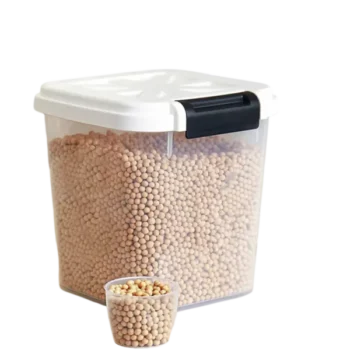
Maintaining Your Dog Food Container for Peak Performance
A neglected container becomes a bacterial breeding ground. Follow this 4-step routine to ensure safety and longevity.
The Weekly Cleaning Protocol
- Empty & Inspect:
Remove all food. Check for cracks, mold spots, or gasket wear (especially in plastic). Discard if damaged. - Deep Clean:
Wash with warm water + 1 tbsp white vinegar (kills mold/bacteria). Never use bleach—residue absorbs into plastic. - Dry Thoroughly:
Air-dry upside down for 24 hours. Trapped moisture = mold growth. - Sanitize Gaskets:
Soak rubber seals in vinegar solution for 10 mins. Wipe dry before reassembling.
When to Replace Your Container
- Plastic: Replace if scratched (harbors bacteria), stained, or if food smells “off” despite freshness.
- Stainless Steel/Glass: Replace only if dented (compromising seal) or gasket fails.
- All Types: If you see any mold, toss the container. Mold roots penetrate materials.
Pro Tips to Maximize Freshness
- Freeze New Bags: Before transferring to containers, freeze kibble for 48 hours to kill pantry moth eggs.
- Use Oxygen Absorbers: Toss in a food-safe packet (like Ageless) for 30% longer freshness.
- Store in Cool, Dark Places: Pantries beat countertops. Never store near stoves or heaters.
FAQs
How long does dog food last in airtight containers?
Unopened dry food stays fresh for 6–8 weeks in quality containers (vs. 2–3 weeks in bags). Once opened, use within 1 month for peak nutrition. Always check for rancid smells or clumping before serving.
Are glass containers better than plastic for dog food?
Glass is non-toxic and odor-proof but heavy and fragile—ideal for small dogs. For large breeds, stainless steel is safer and equally non-porous. Avoid plastic unless it’s certified BPA-free food-grade.
Can I use human food storage containers for dog food?
Only if they’re truly airtight and food-grade. Most Tupperware isn’t seal-tight enough. Pet-specific containers have wider mouths for scooping and are sized for kibble bags. Don’t risk it—get the right tool.
How do I stop bugs from getting into my dog food container?
Freeze new food for 48 hours first. Use containers with locking clamps (not snap lids), and add a food-safe bay leaf inside—it repels pests naturally. Store containers off the floor on metal shelves.
Do dog food containers really keep the food fresher?
Absolutely. University studies confirm airtight containers reduce oxidation by 70% compared to bags. You’ll notice less dust, no stale smell, and your dog may eat more consistently—proof that the food tastes better!
Conclusion
Choosing the right dog food containers isn’t about convenience—it’s a non-negotiable step in safeguarding your dog’s health and maximizing their nutrition.
As we’ve seen, quality containers prevent spoilage, block pests, and preserve vital nutrients that flimsy bags can’t. Prioritize airtight seals, food-safe materials like stainless steel, and proper sizing to avoid waste.
Remember: that $40 investment pays off in saved food, vet bills avoided, and a happier, healthier pup. Take action today—measure your kibble bag, check your container’s seal, and commit to weekly cleaning.
Your dog’s shiny coat, steady energy, and long-term wellness start with what’s in their bowl. Don’t let poor storage undermine the care you pour into choosing their food.





